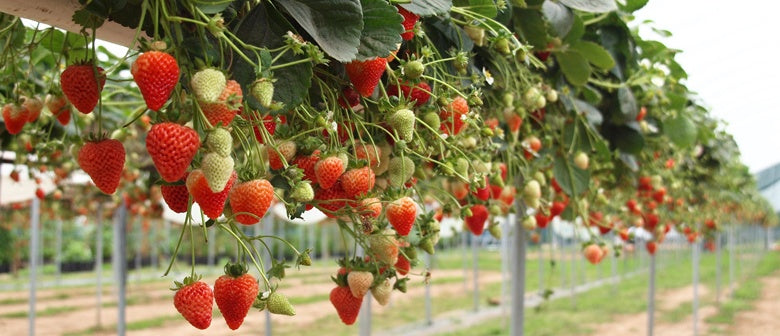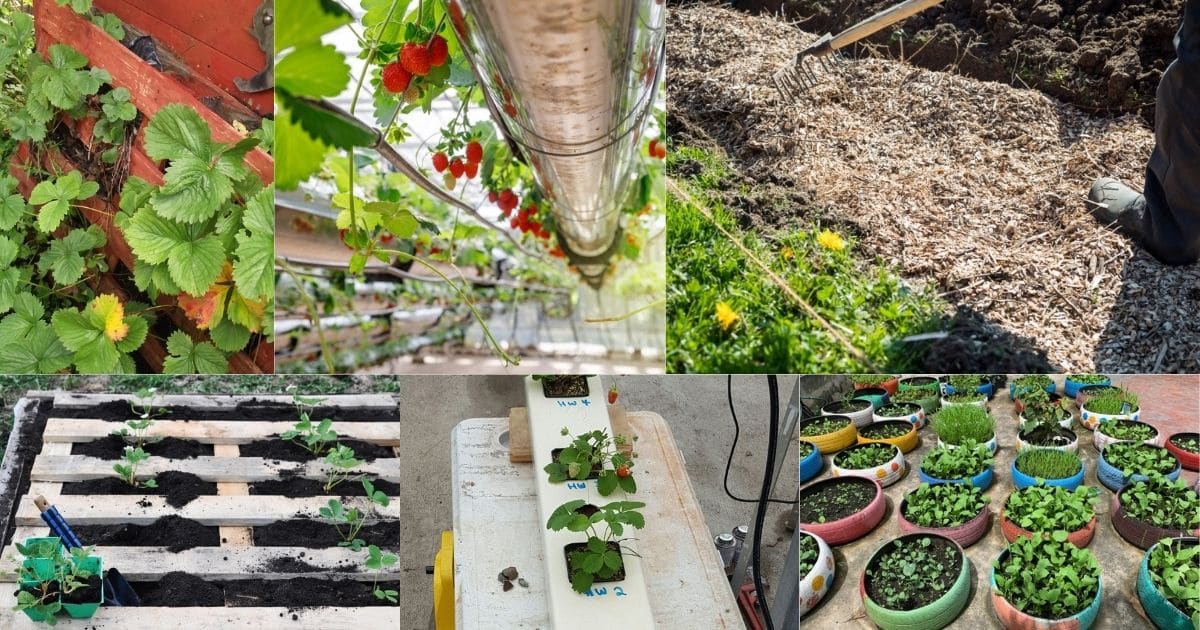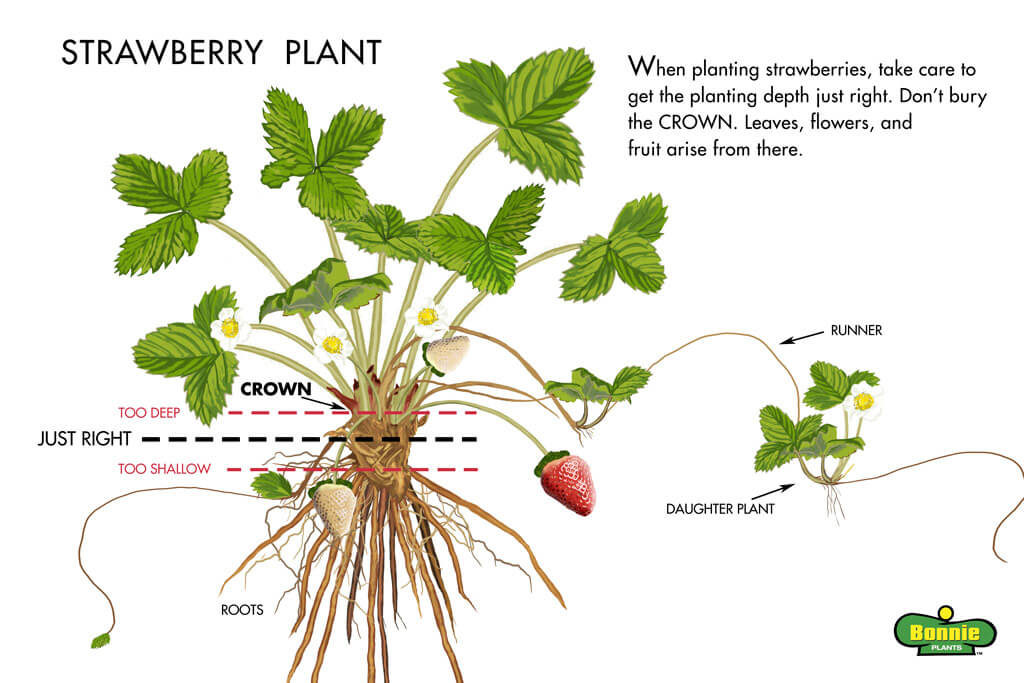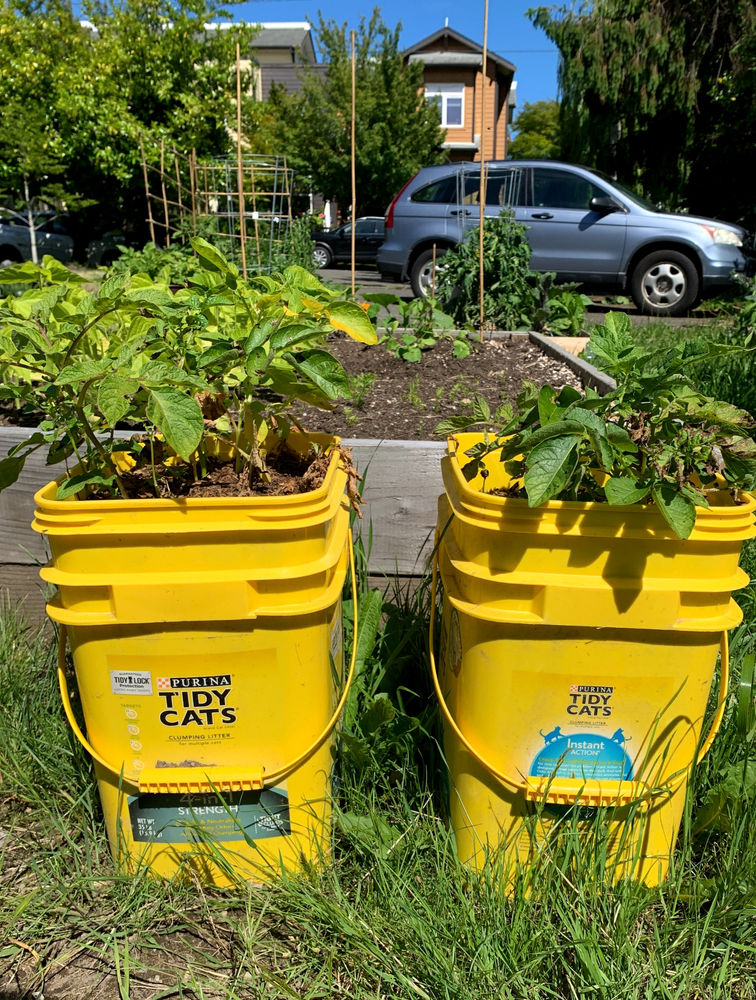The best way to plant strawberries is to choose a sunny location with well-drained soil. Planting strawberries requires careful consideration of factors such as sunlight and soil.
To successfully grow strawberries, it is important to select a sunny spot with soil that drains well. The first step is to prepare the soil by removing any weeds or grass, and then adding compost or organic matter for better moisture retention.
Next, create small mounds or raised beds to ensure good drainage. Place the strawberry plants in the soil, making sure the root crown is level with the soil surface, and water them thoroughly after planting. Regularly check for pests and diseases, and mulch around the plants to conserve moisture and prevent weed growth. By following these steps, you can enjoy a bountiful harvest of strawberries.
Table of Contents
Choosing The Right Variety
Selecting the right variety is crucial for successful strawberry planting. Discover the best way to ensure a fruitful and thriving strawberry harvest.
Strawberries are a versatile fruit that can be grown in a variety of climates and soil types. However, to ensure a successful harvest, it is crucial to choose the right strawberry variety for your specific climate and soil conditions. Consider the following factors when selecting the best variety:
Consider Climate
Before planting strawberries, it is essential to have a good understanding of your local climate. Strawberries thrive in cool to mild temperatures, with a minimum of six hours of sunlight per day. Depending on your location, you may have a short growing season or an extended one. Ensure you choose a strawberry variety that is best suited for your climate to optimize fruit production.
Assess Soil Type
The quality of soil plays a significant role in the success of strawberry plants. Strawberries prefer well-drained soil with a pH range between 5.5 and 6.5. Conduct a soil test to determine the pH levels and assess the soil structure. If your soil is clayey or compacted, it is advisable to amend it with organic matter like compost to improve drainage and enhance nutrient availability for the plants.
When selecting a strawberry variety, consider its tolerance to specific soil conditions. For example, some varieties may be more resistant to soil-borne diseases or withstand acidic soil better than others. Take into account your soil type and choose a variety that will thrive in those conditions.
Preparing The Planting Area
Sure! Here’s a piece of engaging and SEO-friendly content in HTML format for a blog post about preparing the planting area for strawberries:
Before you begin planting strawberries, it’s crucial to prepare the planting area properly to ensure optimal growth and yield.
Clearing The Area
First, start by clearing the planting area of any weeds, rocks, or debris. It is essential to ensure that the area is free from any obstructions that may hinder the growth of the strawberry plants.
Improving Soil Quality
Next, evaluate the soil quality in the planting area. It’s important to have well-draining soil with a pH level between 5.5 and 6.8 for optimal strawberry growth. If the soil quality is poor, consider amending it with organic matter such as compost or well-rotted manure to improve soil structure and fertility. Furthermore, conduct a soil test to determine the specific nutrient needs of the soil, and adjust accordingly by adding the necessary nutrients.
This HTML content provides engaging and SEO-friendly information on preparing the planting area for strawberries, utilizing H2 and H3 headings, bold text, and short, clear sentences. The content is optimized for readability and search engines, providing valuable information to the reader.
Planting Techniques
When it comes to planting strawberries, following the right techniques is crucial for ensuring healthy plants and a bountiful harvest. In this article, we will explore the best practices for planting strawberries, focusing on preparing healthy plants and proper spacing and depth. By implementing these techniques, you can maximize the growth and productivity of your strawberry plants.
Preparing Healthy Plants
Before planting strawberries, it is essential to select healthy plants to ensure their successful growth. Here are some steps you can take to prepare your plants:
- Choose certified disease-free strawberry plants from a reputable nursery or garden center. This will reduce the risk of introducing diseases to your garden.
- Inspect the plants for any signs of pests or diseases. Look for healthy leaves, firm crowns, and no visible damage.
- Trim any long or damaged roots and remove any dead or yellowing leaves. This will encourage healthier root development and overall plant growth.
By following these steps, you can start with strong and healthy strawberry plants, setting the foundation for a successful harvest.
Spacing And Depth
The proper spacing and depth of strawberry plants are vital for their growth and development. Consider the following guidelines when planting:
- Space your strawberry plants 12 to 18 inches apart in rows that are 2 to 3 feet apart. This will provide enough room for the plants to spread and receive adequate sunlight and airflow.
- Dig a hole for each plant that is wide and deep enough to accommodate the roots without bending or crowding them.
- Place the plants in the holes, ensuring the crown is level with the soil surface. The crown is the point where the roots meet the stem.
- Gently firm the soil around the roots, eliminating any air pockets.
By adhering to proper spacing and depth, you enable the strawberry plants to access the necessary nutrients, water, and sunlight, leading to healthy growth and an abundant harvest.

Credit: www.palmers.co.nz
Proper Care And Maintenance
Growing your own strawberries is a delightful experience, and with proper care and maintenance, you can ensure a bountiful harvest. In this section, we will discuss two essential aspects of caring for your strawberry plants: watering and mulching, as well as fertilizing and pruning.
Watering And Mulching
Watering is crucial for the health and productivity of your strawberry plants. Strawberries require consistent moisture, especially during their growing and fruiting period. Ensure that you water your plants regularly, aiming to keep the soil evenly moist. However, be cautious not to overwater, as strawberries dislike soggy conditions.
To retain moisture and prevent weed growth, consider mulching around your strawberry plants. Mulch acts as a protective layer, regulating soil temperature, conserving water, and suppressing weeds. Organic materials like straw or wood chips make excellent mulching options for strawberries.
- Water plants regularly, keeping the soil evenly moist.
- Avoid overwatering, as strawberries dislike soggy conditions.
- Use mulch around plants to retain moisture, regulate soil temperature, and suppress weeds.
- Straw or wood chips are great organic mulching options for strawberries.
Fertilizing And Pruning
Fertilizing your strawberry plants is essential to promote growth and encourage fruit production. Apply a balanced fertilizer, low in nitrogen, in early spring and again after the first harvest. Avoid excessive nitrogen, as it can lead to excessive foliage growth, reducing the quality and quantity of strawberries.
Pruning is another critical aspect of strawberry plant care. After fruiting, remove any yellowing or diseased leaves, as well as runners that divert energy from the main plant. Trimming back runners helps channel nutrients to the mother plant, promoting stronger growth and better fruiting. Additionally, pruning helps improve air circulation, reducing the risk of diseases.
- Apply a balanced, low nitrogen fertilizer in early spring and after the first harvest.
- Avoid excessive nitrogen, as it can reduce the quality and quantity of strawberries.
- Prune yellowing or diseased leaves and runners after fruiting.
- Pruning promotes nutrient flow to the mother plant, leading to stronger growth and better fruiting.
- Improved air circulation through pruning reduces the risk of diseases.
Pest And Disease Prevention
When it comes to planting strawberries, it’s important to be proactive about preventing pests and diseases to ensure a bountiful harvest. By identifying common pests and taking preventative measures, you can protect your strawberry plants and promote healthy growth.
Identifying Common Pests
It’s essential to be able to recognize the signs of common pests that can affect strawberry plants. Some of the most prevalent pests include:
- Aphids
- Spider mites
- Slugs and snails
- Fruit flies
Preventative Measures
Implementing preventative measures can help to safeguard your strawberry plants from pests and diseases. Here are some effective strategies to consider:
- Companion planting: Cultivate plants like marigolds and onions near strawberries to naturally deter pests.
- Regular inspections: Check plants frequently for signs of pests or disease, and promptly address any issues that arise.
- Natural predators: Encourage beneficial insects like ladybugs and lacewings to aid in controlling pest populations.
- Good hygiene: Maintain a clean garden environment by removing debris and fallen leaves, which can harbor pests and disease.

Credit: strawberryplants.org
:max_bytes(150000):strip_icc()/how-to-grow-strawberry-plants-in-pots-1401968-7f2e80c275e14af4a730acb9748c1a5e.png)
Credit: www.thespruce.com
Conclusion
Planting strawberries can be an enjoyable and rewarding experience. By following the steps outlined in this guide, you can ensure healthy and abundant harvests of delicious, juicy strawberries. With proper care and attention, your strawberry plants will thrive and provide you with a bountiful supply of fresh, homegrown fruit.
Happy planting!









